
Shikō Munakata was a woodblock printmaker active in Shōwa period Japan. He is associated with the sōsaku-hanga movement and the mingei movement. Munakata was awarded the "Prize of Excellence" at the Second International Print Exhibition in Lugano, Switzerland in 1952, and first prize at the São Paulo Bienal Exhibition in Brazil in 1955, followed by Grand Prix at the Venice Biennale in 1956, and the Order of Culture, the highest honor in the arts by the Japanese government in 1970.

Mabel Royds (1874–1941) was an English artist best known for her woodcuts.

Gustave Baumann was an American printmaker and painter, and one of the leading figures of the color woodcut revival in America. His works have been shown at the New York Metropolitan Museum of Art, The Cleveland Museum of Art, the National Gallery of Art in Washington DC, and the New Mexico Museum of Art. He is also recognized for his role in the 1930s as area coordinator of the Public Works of Art Project of the Works Progress Administration.
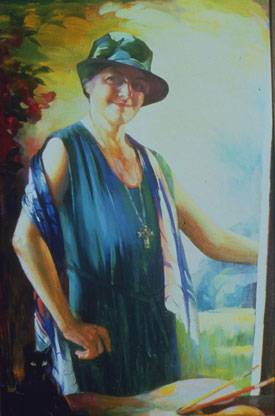
Ella Sophonisba Hergesheimer was an American illustrator, painter, and printmaker who painted and illustrated Tennessee society, including the state's women and children. As a printmaker, she pioneered the white-line woodcut.

Kálmán Mátyás Béla Kubinyi was an influential etcher, engraver and enamelist and a member of the so-called Cleveland School, a number of relatively prominent artists in Northeast Ohio that existed from about 1910 to 1960.

The Provincetown Art Association and Museum (PAAM) in Provincetown, Massachusetts is accredited by the American Alliance of Museums. It was founded as the Provincetown Art Association on August 22, 1914, with the mission of collecting, preserving, exhibiting and educating people about the work of Cape Cod artists. These included Impressionists, Modernists, and Futurists as well as artists working in more traditional styles. The original building at 460 Commercial Street, is listed on the National Register of Historic Places.

Blanche Lazzell was an American painter, printmaker and designer. Known especially for her white-line woodcuts, she was an early modernist American artist, bringing elements of Cubism and abstraction into her art.
Sarah Brayer is an American artist who works in both Japan and the United States. She is internationally known for her poured washi paperworks, aquatint and woodblock prints. In 2013 Japan's Ministry of Culture awarded Sarah its Bunkacho Chokan Hyosho for dissemination of Japanese culture abroad through her creations in Echizen washi. She currently resides in Kyoto, Japan and New York, U.S.A.

Agnes Weinrich was an American visual artist. In the early twentieth century, she played a critical role in introducing cubist theory to American artists, collectors, and the general public and became one of the first American abstractionists. A life-long proponent of modernist art, she was an active participant in the art communities of Provincetown and New York. Early in her career, she traveled widely in Europe and spent extended periods studying in Paris and Berlin. She also studied art in Chicago, Provincetown, and New York. During most of her career, she worked in a Provincetown studio during the warm months and a Manhattan studio during the cold ones. Weinrich's easel work included oil paintings, watercolors, and pastels. She also made block prints and etchings and drew using pencil and crayon. Her paintings, prints, and drawings appeared in solo and group exhibitions throughout her career and she received favorable critical attention both during her life and after her death.
Mary Harvey Tannahill was an American painter, printmaker, embroiderer and batik maker. She studied in the United States and Europe and spent 30 summers in Provincetown, Massachusetts, with the artist colony there. She was instructed by Blanche Lazzell there and assumed the style of the Provincetown Printers. She exhibited her works through a number of artist organizations. A native of North Carolina, she spent much of her career based in New York.
Anna Heyward Taylor was a painter and printmaker who is considered one of the leading artists of the Charleston Renaissance.
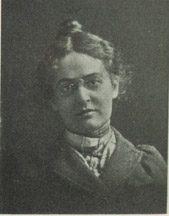
Frances Gearhart was an American printmaker and watercolorist known for her boldly drawn and colored woodcut and linocut prints of American landscapes. Focused especially on California's coasts and mountains, this body of work has been called "a vibrant celebration of the western landscape." She is one of the most important American color block print artists of the early 20th century.

Katrina Andry is an American visual artist and printmaker. She is based in New Orleans, Louisiana.

Edna Boies Hopkins was an American artist who made woodblock prints, based upon Japanese ukiyo-e art and Arthur Wesley Dow's formula of three main elements: notan, a balance of light and dark, line and color.
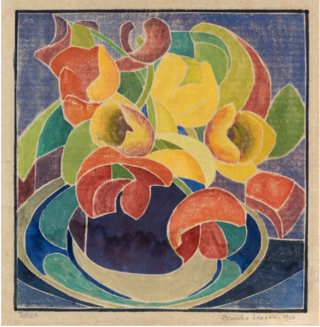
Provincetown Printers were a group of artists, most of them women, who created art using woodblock printing techniques in Provincetown, Massachusetts during the early 20th-century. It was the first group of its kind in the United States, developed in an area when European and American avant-garde artists visited in number after World War I. The "Provincetown Print", a white-line woodcut print, was attributed to this group. Rather than creating separate woodblocks for each color, one block was made and painted. Small groves between the elements of the design created the white line. Because the artists often used soft colors, they sometimes have the appearance of a watercolor painting.
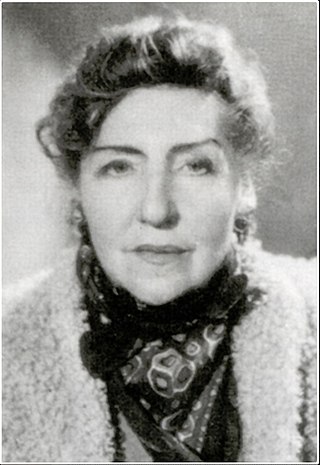
Ethel Mars was an American woodblock print artist, known for her white-line woodcut prints, also known as Provincetown Prints, and a children's book illustrator. She had a lifelong relationship with fellow artist Maud Hunt Squire, with whom she lived in Paris and Provincetown, Massachusetts.

Ferol Katherine Sibley Warthen, also known as Mrs. Lee R. Warthen, was an American painter and printmaker.

Sylvia Solochek Walters is an American artist and educator. She has produced drawings, paintings and collage works in her career, but is best known for complex woodcut prints created through the "reduction and stencil" process. Her work combines elements of realist, decorative and formalist art, flat and illusionistic space, and varied patterning and textures. She has largely focused on portraits, still lifes and domestic interiors, and collage-like combinations of personal symbolism—concerns that writers often align with early feminist art.
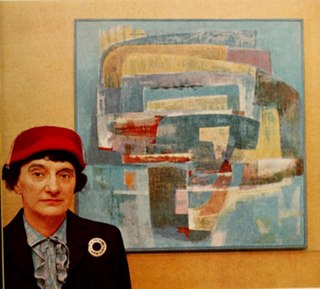
Shelby Shackelford (1899–1987) was an American artist who worked mainly within the art communities of Baltimore, Maryland, and Provincetown, Massachusetts. Her paintings, drawings, and prints were abstract, but not nonobjective. Each of them had, as she said, "a beginning in a visual experience". Early in her career, during a period when many in Baltimore were hostile to what locals called "advanced" trends in art, her paintings were stigmatized as "meaningless stuff". After helping to counteract these local prejudices, she embarked on a long period of experimentation in media and technique, maintaining, as she wrote in 1957, that painting was, "an adventure, a process of discovery for which there should be no end". Critics praised Shackelford for "refinement and sureness of approach and execution", "unusual and amusing arrangements of color and line", "taste and imagination", and "paintings [that] are abstract, well-constructed, with variety of forms, and outstanding color". In addition to making art, Shackelford taught art classes to children and adults, was an active participant in arts organizations, and both wrote and illustrated books that received extensive attention from book reviewers.
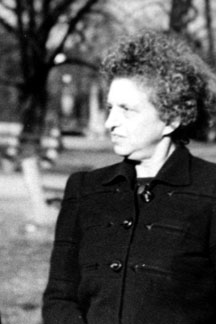
Dorothy Loeb (1877–1971) was an American artist known for her easel art, prints, and murals. She traveled widely in the United States, Mexico, and overseas, residing and working for the most part in Chicago, Manhattan, Eastern Massachusetts, and the State of Querétaro in Mexico. She was also a children's art teacher and proponent of progressive education. Having received training at the Art Institute of Chicago and the Art Students League of New York and having studied with artists in Munich and Paris, she adopted a variety of styles, ranging from representative to highly abstract, and worked in a variety of media including oil on canvas, oil on heavy coated paper, watercolor and ink on paper, and monotype printing. She exhibited in prominent museums including the Art Institute of Chicago, Provincetown Art Association and Museum, Worcester Art Museum, Wadsworth Atheneum, and Institute of Contemporary Art, Boston. She also showed a mural at the 1933 Chicago World's Fair. Most critics responded favorably to her work but not all. At one extreme, a reviewer called her work "the very best in the new art movement" while at the other, a critic said it was "dull, stiff, and lifeless".



















